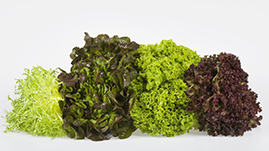Teachers' Domain - Digital Media for the Classroom and Professional Development
User: Preview



The Greek philosopher and scientist Aristotle identified only two major kingdoms of living things: plants and animals. With microscopes and other modern technology, scientists have identified four other kingdoms: fungi, protists, archaebacteria, and eubacteria. However, the fruits and vegetables that we eat, as well as other trees, shrubs, ferns, mosses, and flowers, still are considered part of the plant kingdom.
The taxonomy or classification of living things continues from kingdom through phylum, class, order, family, genus, and species. Plants that are in the same family share similar traits, some of which can be readily recognized. When we study plant families, it helps us understand classification and its important role in biological science.
The framework of plant families can be used to examine similarities and differences among garden plants. Plants from the same family often have similar vulnerability to disease or insects. They may also share similar seeds, leaf patterns or structures, growing needs, textures, and even tastes.
When plants from the same family appear to have significant differences like tomatoes and potatoes do, asking why is a great way to learn more about plants and how they grow. Studying plant families allows us to apply scientific thinking to our everyday lives in the kitchen and the backyard garden.
 Loading Standards
Loading Standards